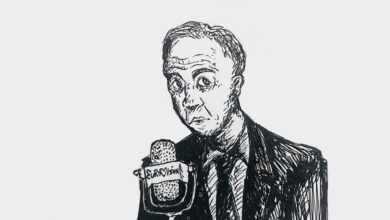‘Wochiigii lo: End of the Peace’ comments on treaties and Indigenous rights
The film documents the story of two small First Nations in their fight to preserve their land and way of life.
 Frederick Kroetsch
Frederick KroetschWochiigii lo: End of the Peace is one of the feature films that will be at the Edmonton International Film Festival (EIFF). The film documents the story of two small First Nations from northern British Columbia in their fight to preserve their way of life.
The film will be playing at 6:30 p.m. on October 4th as part of the EIFF. It will be shown in-person at Landmark Cinemas Edmonton City Centre location. After its showing there will be a Q&A with writer, producer, and director Heather Hatch. Hatch is a U of A alumni, and this is her first feature-length film; she previously wrote and directed Jaat Sdiihltl’lxa: Woman Who Returns, a film about her Haida heritage.
Wochiigii lo: End of the Peace is a 90-minute documentary about the West Moberly and Prophet River First Nations and their fight against the Site C dam, whose construction on the Peace River would destroy their way of life.
Filmed on Treaty 8 territory, the documentary details the aggressive push to build the Site C dam by previous B.C. Premier Christy Clark, despite the pushback from Indigenous people, non-Indigenous landowners, and the fact that the dam was behind schedule and over budget. The documentary also details the continuation of the dam project under current B.C. Premier John Horgan.
In Wochiigii lo: End of the Peace, Roland Willson, Chief of the West Moberly First Nations, explains that the fish caught in the Peace River contained so much mercury that it was no longer a safe and sustainable source of food for Indigenous peoples. The construction of the dam released methylmercury into the stream, contaminating the fish.
The documentary also references the Bennett Dam, also built on the Peace River. Indigenous nations located within the flood zone of that dam were never consulted, and instead, moved to lands they had no connection with.
Hatch explained that in situations where small groups — in this case two small bands totalling 700 people — fight against the government, it can be difficult to get the word out. This is why she felt “called to help” by filming this documentary.
Hatch elaborated on her decision to focus on the Site C dam project in her documentary, saying that this was a small window into a much bigger issue.
“It might seem like it’s only just there,” Hatch said. “But this is just a microcosm of why there’s still human rights issues for Indigenous peoples in Canada today and not only that, just how broad it is — how invading colonialism is to Indigenous ways of life.”
She also explained that her work with the film changed the more time she spent working on it and understanding the story.
“As you get to know the story, the people, and the history, it starts to take shape in a smaller [way] — the story shrinks, the theme shrinks, and it becomes a better product,” Hatch said.
After watching the documentary, Hatch wants viewers to have compassion, and to understand the lifelong and intergenerational struggles of Indigenous peoples.
“Obviously, [I want viewers to have] compassion for the fight,” Hatch said. “I was there for five years [filming]. But [for] these people, this is a multigenerational fight.”
“[Viewers should have] compassion for imagining how much it is going to affect your life, if it had been your … grandfather in his 80s passing away, and you’re still in the fight that he was in to try and stay who you are — what your family and identity is.”
Hatch explained that the film isn’t just about activism, but it’s a story that can be magnified, and empathized with.
“This sounds like an activist film, but really, it’s like a story that we can all relate to universally … [It’s like] David and Goliath. It’s something we can all understand fundamentally when you want to maintain who you are, your dignity, your human rights, [and] your right to exist.”




